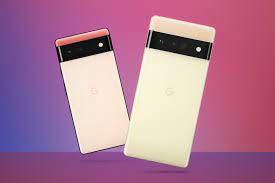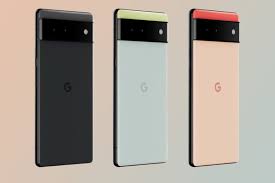Google could be the next big tech company to jump into the foldable space. It’s been rumored for a while that a bendable Pixel phone might be on the way, especially given the company’s focus on hardware in recent years. While the name of the potential Google foldable phone is far from confirmed — it could be called the Pixel Fold or the Pixel Notepad — rumors seem to have settled on a release timeline. According to reliable display analyst Ross Yong, it could launch as early as spring 2023.
So far, the company has been mum on the possibility of a foldable phone. But that didn’t stop the rumor mill from churning and Pixel fans hoping. Remember, Google confirmed that it was prototyping folding technology back in 2019. Before that, it filed a patent application for a foldable device.

Let’s not forget that Google isn’t the only company reportedly jumping on the foldable phone bandwagon. It appears to be an open secret that Apple is preparing to do the same, although that may not appear until 2025. Samsung, meanwhile, appears to be going full steam ahead with its foldable phones. The South Korean company unveiled its fourth-generation foldable phones, the Galaxy Z Fold 4 and Galaxy Z Flip 4, at its Unpacked event in August.
Pixel Fold design: More Oppo Find N than Galaxy Z Fold 4
Animations in Android 12L, Google‘s software designed for large-screen devices like tablets and foldable phones, have hinted at what the Pixel Fold might look like. Based on this, Google’s foldable phone will be in the form of a book-style foldable dual screen. Google’s foldable phone was initially rumored to resemble the taller, leaner design of Samsung’s Galaxy Z Fold 3, with an aspect ratio of around 22.5:18. But according to 9to5Google and other media reports, the Pixel Fold that opens is more like the square shape of Oppo’s foldable phone, the Find N. When closed, it is believed to have an aspect ratio closer to 18:9. If true, it would mean that, like the Find N, the Pixel Fold could more naturally function as a regular phone when closed.
Pixel Fold Design: Only 2 Colors
Front Page Tech published renders based on images of the Google Pixel Fold online in November. The renders of the phone show two colors, one is the obsidian model (black) and the other is the chalk model (white).
Pixel Fold camera: Camera module could be downgraded from Pixel 6
There aren’t many rumors about the Pixel Fold’s camera, but there’s still room for some speculation, courtesy of 9to5Google. The site reports that the Pixel Fold will have two front-facing 8-megapixel lenses, one likely on the cover and another for the inside, as well as a 12-megapixel rear camera. The main sensor is expected to be down from the Pixel 6 series, as it is rumored to rely on the Sony IMX363 sensor used in the Pixel 3 in 2018, as opposed to Samsung’s top-of-the-line GN1 sensor, from the Pixel 6 series’ primary 50-megapixel camera. If I had to guess, the logic for this potential decision comes down to the size of the GN1 sensor, which is one of the larger camera sensors on the market. This means that foldable phones are difficult to carry around without adding to the overall weight of an already heavy foldable device. Another rumor points to the Pixel Fold having a 50-megapixel main camera along with two 12-megapixel cameras and an 8-megapixel camera.
Pixel Fold price: $1,400 to $1,800
There’s no telling what the phone’s price will be until the launch date — if that happens at all. But according to a report by 9to5Google citing unnamed sources, the Pixel Fold will be priced below the $1,800 mark. Another report spotted by BGR in March seemed to confirm this view, putting the price down to $1,399, below Samsung’s $1,800 Galaxy Z Fold 4 . These rumors seem plausible, as they seem to be in line with Google‘s strategy to undercut its rivals in terms of price.
Pixel Fold Processor: Tensor
Given the complex and expensive trouble Google has had with developing its own system-on-a-chip technology, the Pixel Fold will almost certainly run on the Tensor chipset that debuted on the Pixel 6 series.
>>>>>>>>>>>Google battery









